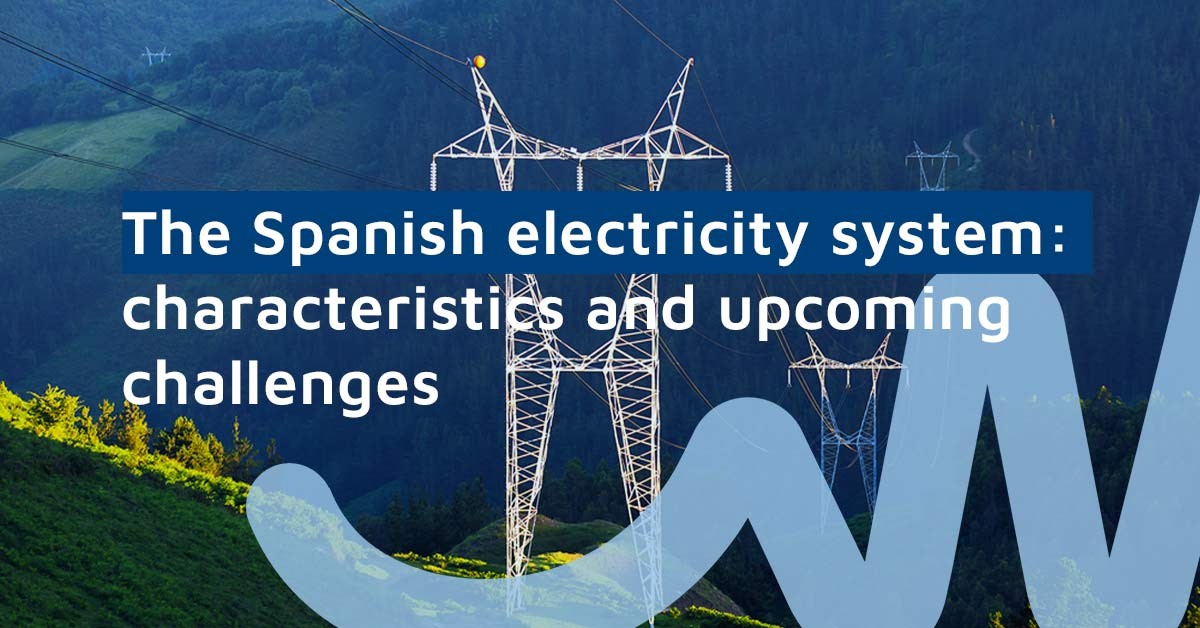The Spanish electricity system: characteristics and upcoming challenges
From generation to final consumption, the electricity system encompasses all the phases that electricity goes through. It is a complex process that involves multiple stakeholders, a system that continues to generate doubts even though it is such a prevalent part of our lives. Everyone has heard the famous phrase, "If they have explained the Spanish electricity system to you and you understand it, they have explained it badly". Let’s get started!
What are the phases of the electricity system?
The Spanish electricity system took a regulatory turn in 1997 with the Electricity Sector Law 54/1997, amended by Law 24/2013, which restructured and separated all the activities involved in this process. Energy generation, transmission, distribution and commercialisation became separate and independent activities.
1. Generation.
As the name suggests, the first step is to produce the electrical energy that reaches the end consumer. The places where energy is generated are called power plants, with varying degrees of efficiency depending on their type. When it comes to renewable energy, these power plants include wind farms, photovoltaic plants, hydroelectric power plants, solar thermal power plants, biomass plants and biogas plants.
There are also non-renewable power plants within the electricity system (which use fossil fuels to produce energy).
In Spain, electricity generation is regulated by the State, but it is liberalised, which means that any person or company can generate electricity, feed it into the grid and sell it.
Spain has also been a benchmark in integrating renewables into the electricity system. Specifically, in 2021, electricity generation in Spain emitted 35.96 million tonnes of CO2, compared to 36.13 million tonnes in 2020. This figure is expected to continue to improve in the coming years, considering the objectives adopted in the PNIEC, where it is forecasted that 74% of electricity generation will be produced from renewable sources by 2030.
2. Transport.
During this phase, the energy is quickly and safety transferred to where it is consumed.
The electricity travels from the power plants, through the transmission network (large high-voltage towers), to the electricity distributors’ substations. This directly conditions the rest of the phases of the electricity system since electricity needs to be transported to the distributors as soon as it is generated.
In addition, the challenges of large-scale electricity storage mean that production is subject to demand, so all unconsumed energy must be exported. An algorithm based on this demand accurately estimates the generation needs for the future.
Before feeding the energy into the transmission grid, the voltage is raised from the generation voltage—which generally ranges between 6-18 kV—to the transmission grid voltage, which can be 110, 132, 150, 220 or 400 kV. This step is performed in large transformer substations downstream from the power plants for reasons of efficiency; the higher the voltage at which the electricity is transported, the lower its intensity, and therefore the losses in the form of heat in the conductor cable, something known as the “Joule effect”.
Red Eléctrica de España (REE) is the sole manager of the transmission grid. Its responsibilities include the operation and maintenance of the transmission grid, its extension and the real-time management of electricity demand, with ongoing communication with generators so that they can start up or stop according to demand. REE also provides information on interconnections, the unavailability of generators and forecasts of the energy that will be generated.
3. Distribution.
In this third phase of the electricity system, the transmission grid usually takes electricity to areas close to population centres, where an electricity substation reduces its voltage to levels that normally range from 1 to 66 kV (occasionally, there are also sections of the distribution grid at voltages of 110, 132 or 150 kV). The distribution grids are then connected from these substations to homes, businesses, and industries that require electricity.
As a final step, the distribution networks have several transformation centres within the population centres that reduce the voltage level from 1-66 kV to voltages suitable for domestic use (230 or 400 V). The electricity distributors also read the customers' meters and notify the supplier of how much energy each customer should be billed for. They are also responsible for installation maintenance, ensuring that metering equipment is kept in good condition, and for quick responses to power cuts. There are currently 336 distributors in Spain, and this is a non-liberalised sector, which means that new ones cannot currently be created.
4. Commercialisation.
In this phase, energy is sold to end customers. The distributors buy energy on the power exchange or reach bilateral agreements with generators to buy and subsequently sell energy to customers at an agreed price. Commercialisation is liberalised, and anyone can create a commercialisation company. There are two types of distributors:
Reference or regulated market distributors. These suppliers are authorised by the Government and offer a voluntary price for the small consumer and subsidised rates.
Free market suppliers. This group of suppliers sell energy at prices that are based on the free market.
Upcoming challenges for the electricity system
- Efficiently integrating all the renewable energy expected in the coming years according to the PNIEC's plan is no easy task. The plan foresees a total installed capacity in the electricity sector of 161 GW by 2030, of which 50 GW will be wind, 39 GW solar photovoltaic, 27 GW combined cycle gas, 16 GW hydro, 9.5 GW pumped, 7 GW solar thermal and 3 GW nuclear, as well as smaller capacities of other technologies. Therefore, to comply with this scheme, the transmission and distribution networks will need to be strengthened and expanded to will allow for more power transmission points.
- Another vital point is the interconnection with our European neighbours; back in 2002, the European Union set a minimum target of a 10% interconnection ratio for all Member States by 2020 (this ratio is the sum of import capacities compared to installed generation capacity). Spain was far below this target in March 2022, and still falls short of 6% interconnection. Following the impact of the war in Ukraine, the vital importance of interconnection to secure energy supply and stabilise prices was driven home that same month.
- To achieve optimal integration between transmission and distribution networks and renewable generation, investment in the digitalisation of networks must remain a priority. Elements such as advanced high-, medium- and low-voltage supervisors, equipment for metering and monitoring the grid, storage systems, communications equipment and systems associated with remote control, etc., make it possible to correctly manage and integrate demand.
What other challenges do you think the Spanish electricity system is facing? If you need more information, please do not hesitate to contact
When you subscribe to the blog, we will send you an e-mail when there are new updates on the site so you wouldn't miss them.

